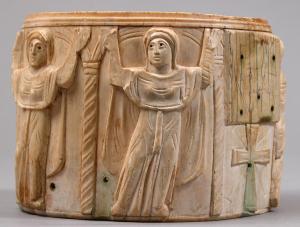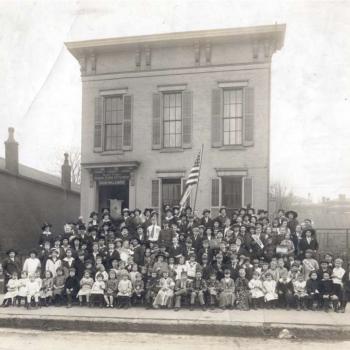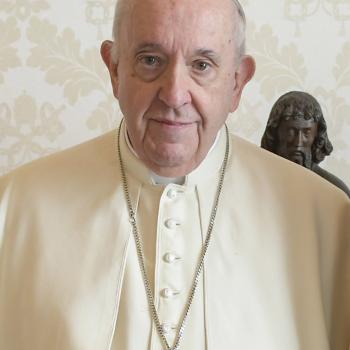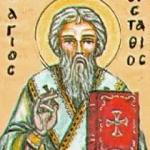When someone makes the mistake of asking what I do for a living, I typically describe myself as a historical theologian with a focus on the early church. This is normally enough to run someone off! But in the few instances where they probe further, I specify that I study ‘patristic theology’—that is, I study God in the thought of those from the first several centuries of the church. The term “patristic” is derived from the Greek and Latin terms for “Father” (πατήρ and pater respectively) and has been used to describe the study of those theologians and writers who were pivotal for the development of doctrine amidst theology controversies and the ecumenical councils—think Augustine of Hippo, Athanasius of Alexandria, and Irenaeus of Lyons, for example. In sum, patristics is the study of God in the church fathers. But this definition might raise some concern: where are the mothers of the church? Are they neglected from the start?
Women in Early Christianity
It is important to note that the majority of Christians in the early church were likely women, meaning there were plenty of church ‘mothers’ who were incredibly influential in the church (Stark, The Rise of Christianity, Ch. 5). This is one of the most beautiful aspects of early Christianity to me, when considering the social religious context of the Roman world—most women (particularly in the lower social classes) were granted few rights and seen as less than men in most ways. This is exemplified in a critique of Christianity by the second century Roman writer, Celsus. He writes, mocking Christians:
Their injunctions are like this. ‘Let no one educated, no one wise, no one sensible draw near. For these abilities are thought by us to be evils. But as for anyone ignorant, anyone stupid, anyone uneducated, anyone who is a child, let him come boldly. By the fact that they themselves admit that these people are worthy of their God, they show that they want and are able to convince only the foolish, dishonourable and stupid, and only slaves, women, and little children (Origen, Contra Celsum 3.44).
Christianity was extremely counter cultural in granting all women dignity and worth, which seems to be part of why so many flocked to the Christian God: they were worthy of this God, or rather, Christians claimed that God gave all persons worth, regardless of social status or sex. That is, Celsus’ list of undesirables—slaves, women, and children—were loved and cherished by Christians from the start. It is no wonder why they flocked to Christianity!
This did not mean that women had the same opportunities in the church as men though. While women are noted as important leaders in house churches and in Paul’s ministry (Philippians 4:2-3, Romans 16:7, 1 Corinthians 1:11, Colossians 4:15, Philemon 1:2), played a part in the church hierarchy as (at the very least) deaconesses (Romans 16:1-2), and might have even been minsters (Pliny, Epistle 10.96), the vocation of bishop or professional theologian was not generally open to them. Thus, while there are many examples of women in ecclesiastical leadership in the early church—and they did play a massive role—the responsibilities attached to this leadership rarely included writings large treatises or spiritual works. In this regard, there are simply more writings from men than from women in this period, at least that have survived or that we know of. But that doesn’t mean writings by or about women don’t exist! Wonderfully, growing interest and attention has been given to making these writings accessible, from which our understanding of the early church has been rounded out.

A Continual Problem in our Storytelling
All of this has been cause for scholarly discussion and redefinition recently (See: Michel Fédou, The Fathers of the Church, 11-16), pushing some to use terminology that is gender inclusive: early church theology, for instance. And this seems like a warranted decision, particularly if we are being cognizant of the way that gendered language impacts our understanding of the world and our past. If we exclusively study theology written by men and only tell their stories, we miss out on the rich diversity of the early church.
In considering the contemporary context in the evangelical church, it seems that we still have this problem, in focusing primarily on the stories of men. As an introduction to one of my wife’s (Lynneth Miller Renberg) history classes, she asks her college students, some of whom have been lifelong church goers: how many famous Christian women can you list from the history of the church? Unfortunately, the list is often very short. This is not necessarily from misogyny on the part of these students, but rather from what is made visible to them. Historically, the narratives of church history that we share often focus on men, especially from the pulpit. But, when looking at the makeup of most churches, it is often women who are serving and leading, both past and present. In nearly every branch of Christianity today, for example, there are more women of faith than men. There seems to be a radical disconnect between the experience of most local church bodies—which are often majority women—and the stories of faith that are told.
The Visibility Problem: Mothers of the Church
My point in all of this is not to convince you that we need to reject the term ‘patristic’ or make claims about women in leadership—it is far more modest than that. I simply want to draw attention to those faithful Christian women from the early church who had much to offer in their context and in our own. While many of the men of the church from this period are household names, few women are acknowledged or recognized for their theological contributions or their remarkable faith. It seems that many women from the early church are invisible.
In an effort to address this visibility problem, I will be starting a ‘Mothers of the Church’ series, which simply discusses the lives and thoughts of women from the early church from whom we can learn. The goal, here, is not to reveal tons of new scholarly information, but simply to make these church mothers visible to a broader audience, pointing to further resources along the way. Women like Macrina the Younger, Perpetua, and Fabiola have important stories to tell, which can bolster faith and provide great insight for Christians today. Perhaps, if we pay closer attention to the stories we tell about women in the past, we might also think more critically about our modern discussions about women and the church, allowing their voices to be heard. We have heard much from our church fathers—I hope we can grant space for the mothers of the church as well.

















